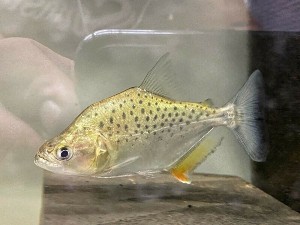
Are piranhas vertebrates or invertebrates?
 Piranhas are infamous for their razor-sharp teeth and vicious feeding behavior, but scientifically they belong to the group of animals with backbones - the vertebrates. All approximately 22 piranha species share key vertebrate features including a spinal column and internal skeleton. As fish, piranhas are cold-blooded ray-finned animals equipped with fins and gills, quite unlike warm-blooded mammals. However, both fish and mammals are still considered vertebrates based on common anatomical traits. Piranhas' evolutionary lineage firmly places them within the vertebrate family, sharing a closer relationship with bony fishes than any invertebrate species that lack a backbone. Their predatory reputation conjures visions of shark-like killers, but piranhas remain vertebrate fish despite their formidable teeth and appetite for flesh. From the presence of bone structures to their genetic heritage, piranhas are undeniably true vertebrates.
Piranhas are infamous for their razor-sharp teeth and vicious feeding behavior, but scientifically they belong to the group of animals with backbones - the vertebrates. All approximately 22 piranha species share key vertebrate features including a spinal column and internal skeleton. As fish, piranhas are cold-blooded ray-finned animals equipped with fins and gills, quite unlike warm-blooded mammals. However, both fish and mammals are still considered vertebrates based on common anatomical traits. Piranhas' evolutionary lineage firmly places them within the vertebrate family, sharing a closer relationship with bony fishes than any invertebrate species that lack a backbone. Their predatory reputation conjures visions of shark-like killers, but piranhas remain vertebrate fish despite their formidable teeth and appetite for flesh. From the presence of bone structures to their genetic heritage, piranhas are undeniably true vertebrates.
Are piranhas vertebrates or invertebrates?
Piranhas are vertebrates. They have a spinal column and internal skeleton, which are defining features of vertebrate animals.
Do piranhas have a backbone?
Yes, piranhas have a backbone and spinal column composed of vertebrae. This vertebral column distinguishes them as vertebrates.
Are piranhas fish or mammals?
Piranhas are fish, not mammals. They are cold-blooded with gills and fins, unlike warm-blooded mammals. But both groups are vertebrates.
What type of vertebrate are piranhas?
Piranhas are classified as ray-finned fish, which are a major group of vertebrate animals including most fish species like salmon and goldfish.
Do all piranha species have backbones?
Yes, all piranha species have backbones and are vertebrates. There are no known invertebrate piranha species. Approximately 22 species of piranha exist.
Are piranhas more closely related to vertebrates or invertebrates?
Piranhas share a closer evolutionary relationship and ancestry with other vertebrate animals compared to invertebrates based on their physiology.